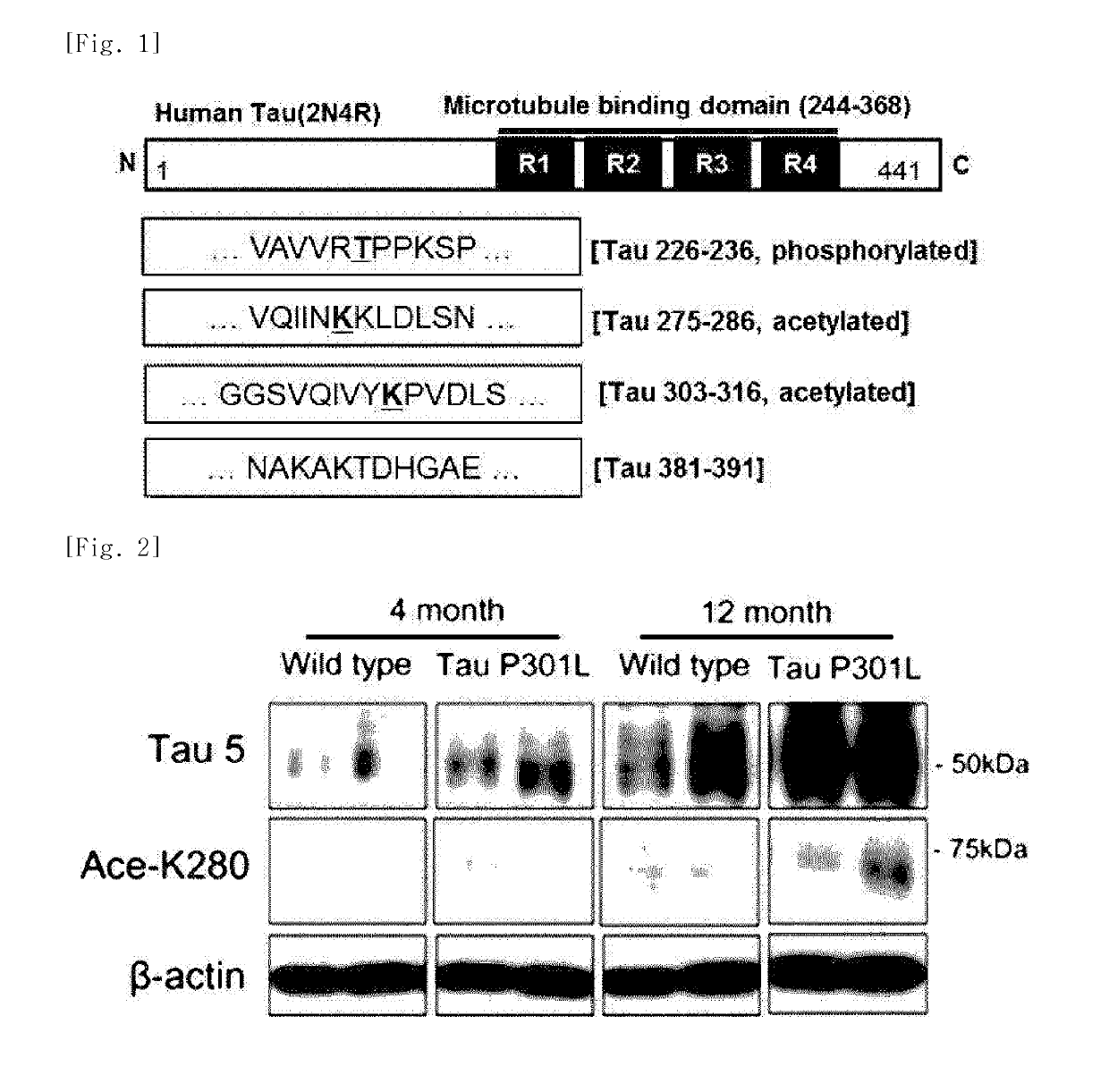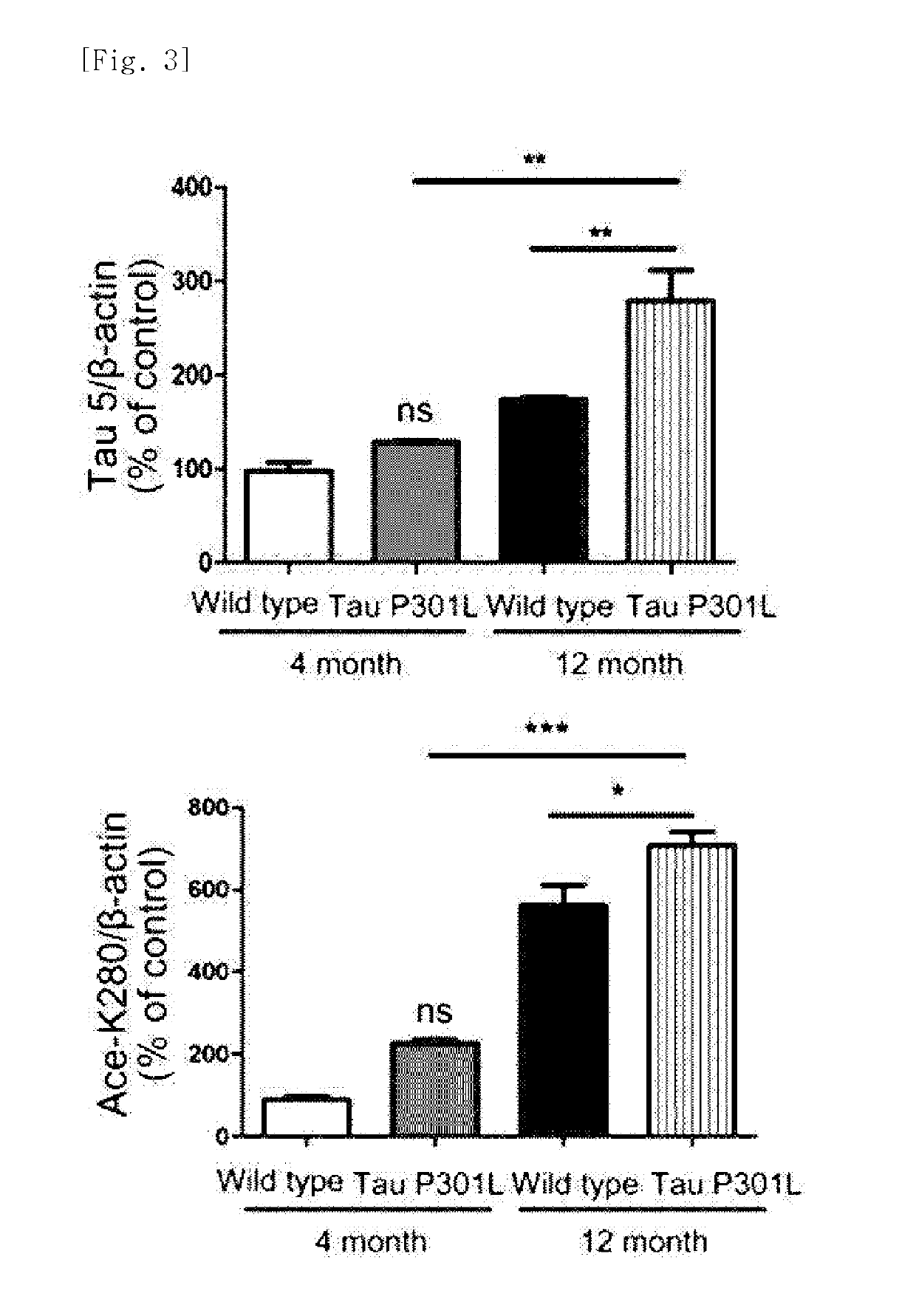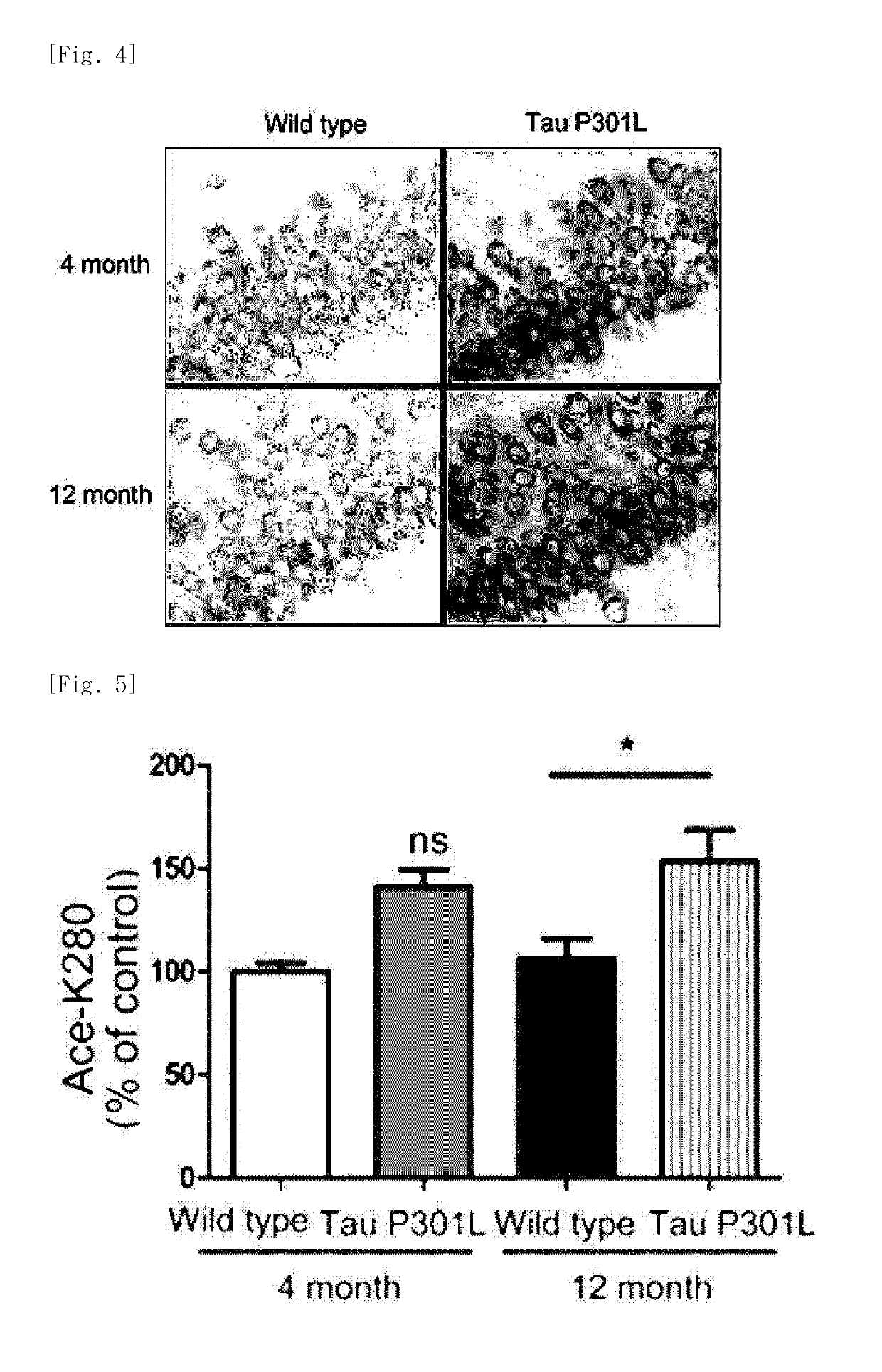Mutated tau protein fragment and use thereof
a technology of tau protein and fragment, which is applied in the field of modified tau protein fragment, can solve the problems of difficult to find and remarkable toxicity of nerve cell accumulation of -amyloid, and achieve the effect of inhibiting the aggregation of abnormal tau proteins and being easy to prepar
- Summary
- Abstract
- Description
- Claims
- Application Information
AI Technical Summary
Benefits of technology
Problems solved by technology
Method used
Image
Examples
preparation example 1
ed Tau Protein Fragments
[0127]In order to prepare modified tau protein fragments, in the amino acid sequence of the tau protein which consists of 441 amino acids, four modified tau protein fragments, which are presumed to act in pathogenesis of Alzheimer's disease, were selected. As illustrated in FIG. 1, in the amino acid sequences of the four modified tau protein fragments located in the microtubule domain, the 12-amino acid sequence section was designated.
[0128]Specifically, the protein fragment having the 275th to 286th amino acid sequence section in the amino acid sequence of the tau protein in which the 280th amino acid is acetylated was designated as K280-ac, and the protein fragment having the 226th to 236th amino acid sequence section in the amino acid sequence of the tau protein in which the 231st amino acid is phosphorylated was designated as pT231. In addition, the protein fragment having the 381st to 391st amino acid sequence section in the amino acid sequence of the ta...
preparation example 2
ia Mouse Model and Active Immunization
[0130]JNPL3 mice expressing Tau-P301L mutant gene were purchased from Taconic, and back-crossed with C57bl / 6 mice for five generations in the experimental animal room of the Asan Institute for Life Sciences. Then, the mice were raised under a specific pathogen free (SPE) condition. For active immunization, the mice were administered, for six months starting from three months after birth at intervals of two weeks, two weeks, four weeks, four weeks, five weeks, four weeks, and one week in this order, the four modified tau protein fragments prepared in Preparation Example 1 together with keyhole limpet hemocyanin (KLH) as a carrier and an aluminum adjuvant. At this time, administration was carried out through intraperitoneal injection (IP injection). The dementia mice which were actively immunized by administration of the K280-ac fragment were designated as Tau-P301L-K280-ac.
[0131]Among these, normal mice (wild type 2N4R) and Tau mutant mice (herei...
experimental example 2
acteristics of Dementia Mouse Model
[0132]The Tau-P301L dementia mouse model used in experiments exhibited a difference in accumulation of the tau protein with aging as compared with the normal mice. Specifically, it was identified that a 4-month-old dementia mouse model exhibits an expression level of the tau protein similar to that in the normal mice, whereas a 12-month-old dementia mouse model showing severe dementia symptoms exhibits an expression level of the tau protein which is close to about 2 times that in the normal mice. Increased amount of acetylated tau proteins in the 12-month old dementia mouse model was identified by immunoblotting using ADEL-Y01h antibody prepared in Preparation Example 2 (FIGS. 2 and 3). In addition, in the dementia mouse model, even in a hippocampus region which is important for cognitive function, an increase in tau proteins in which lysine, the 280th amino acid, is acetylated was identified, through immunohistochemical staining and immunoblotting...
PUM
| Property | Measurement | Unit |
|---|---|---|
| Length | aaaaa | aaaaa |
| Fraction | aaaaa | aaaaa |
| Length | aaaaa | aaaaa |
Abstract
Description
Claims
Application Information
 Login to View More
Login to View More - R&D
- Intellectual Property
- Life Sciences
- Materials
- Tech Scout
- Unparalleled Data Quality
- Higher Quality Content
- 60% Fewer Hallucinations
Browse by: Latest US Patents, China's latest patents, Technical Efficacy Thesaurus, Application Domain, Technology Topic, Popular Technical Reports.
© 2025 PatSnap. All rights reserved.Legal|Privacy policy|Modern Slavery Act Transparency Statement|Sitemap|About US| Contact US: help@patsnap.com



